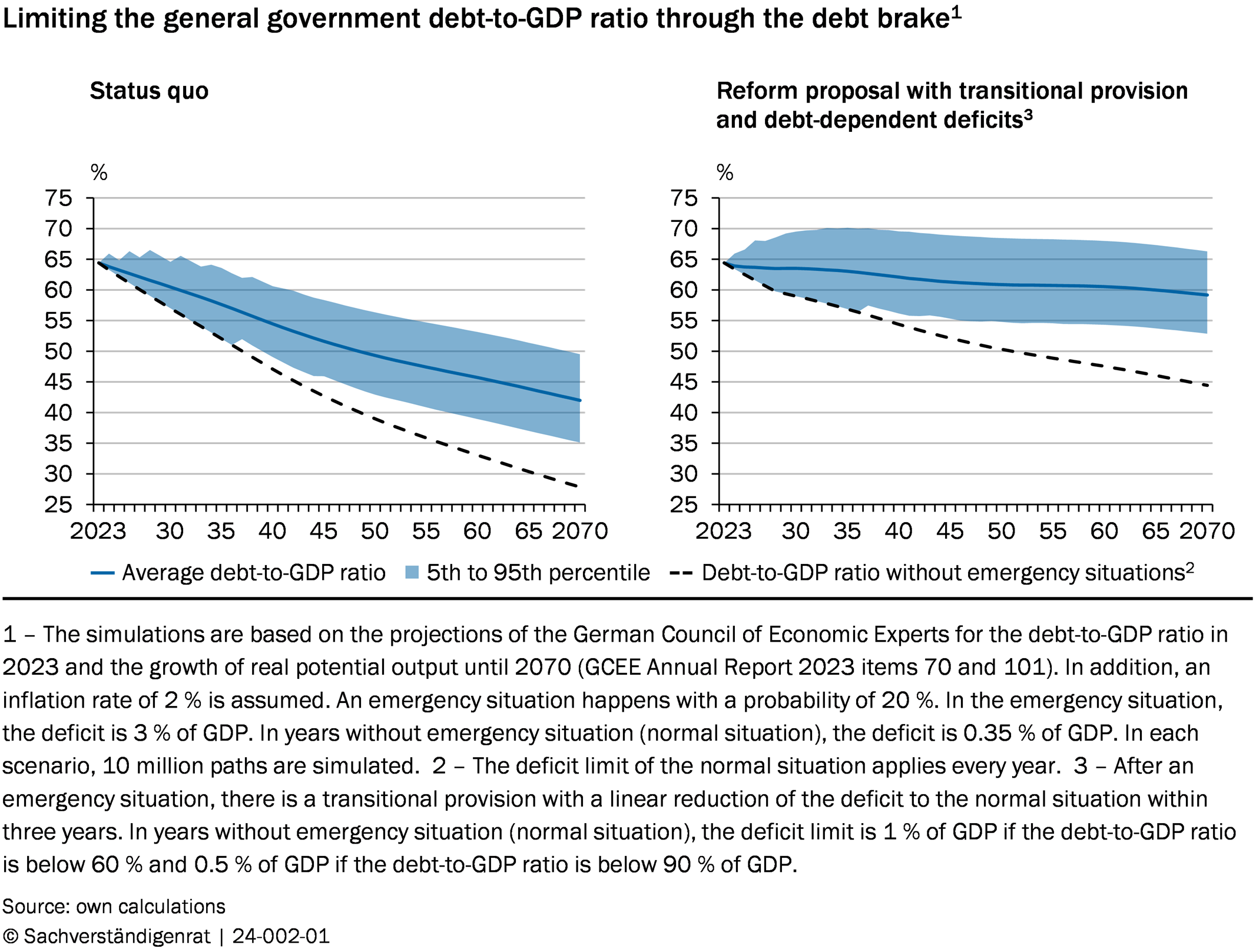- In its current form, the debt brake is more rigid than necessary. It restricts the fiscal space for future-oriented expenditure.
- Three elements of the debt brake should be adjusted: Introducing a transitional phase following an emergency; increasing deficit limits when debt ratios are low; making the cyclical adjustment less susceptible to revision.
- These adjustments will increase the flexibility of fiscal policy without jeopardising the sustainability of public finances.
In its new policy brief, the German Council of Economic Experts (GCEE) unanimously proposes adjusting the debt brake regarding three elements. “Our proposed adjustment to the debt brake increases the flexibility of fiscal policy. It enables forward-looking public spending and regulates the transition after an emergency without undermining the sustainability of public finances,” explains Monika Schnitzer, chair of the GCEE.
First, the GCEE proposes the introduction of a transitional phase during the years immediately following the application of the debt brake's exception clause. During this transitional phase, a structural deficit above the normal limit would be permissible, but must be reduced year by year. Second, the limit for the annual structural deficit should depend on the debt ratio and increase in the case of low debt ratios. Third, methodological improvements are needed to make the cyclical adjustment less susceptible to revisions and thus enable a more adequate cyclical fiscal policy.
Transitional provision
Economic crises can impact an economy considerably even in the years following the acute emergency. Immediate consolidation of the national budget in these years in order to comply with the debt brake could lead to unnecessarily strong negative impulses in an economy that is still weak. For this reason, a transitional provision should be added to the debt brake's exemption clause. It should stipulate a gradual reduction of new borrowing until the regular limit is reached again. “A transitional regulation would provide additional fiscal space for crisis management and at the same time put an end to the constant discussion of declaring emergencies,” explains council member Ulrike Malmendier.
Debt-dependent deficit limits
The GCEE has simulated how the general government debt ratio will develop in the long term under the existing rules. The simulations show that government debt would fall steadily, even if the net borrowing limits are maxed out every year and crises with higher borrowing occur regularly. “Our analysis shows that the debt brake is more rigid than it needs to be. The deficit limits could therefore be increased at low debt ratios,” says council member Achim Truger.
The GCEE proposes deficit limits to depend on the level of the general government debt ratio. If the debt ratio is below 60 percent of GDP, the limit for the structural deficit should be 1 percent of GDP. Between 60 percent and 90 percent, a deficit of 0.5 percent of GDP should be permissible. For 90 percent national debt and higher, only the previous limit at 0.35 percent should be permitted. “Deficit limits that allow higher borrowing than before at low debt ratios moderately expand the fiscal space without jeopardising sustainability,” says council member Veronika Grimm.
Methodological improvement of cyclical adjustment
The cyclical adjustment should be reformed such that cyclical needs are better reflected and revisions become less frequent. “An improvement of the cyclical adjustment should not expand the structural scope for debt, but rather reflect the cyclical fiscal requirements at the time of budget preparation,” explains council member Martin Werding.

